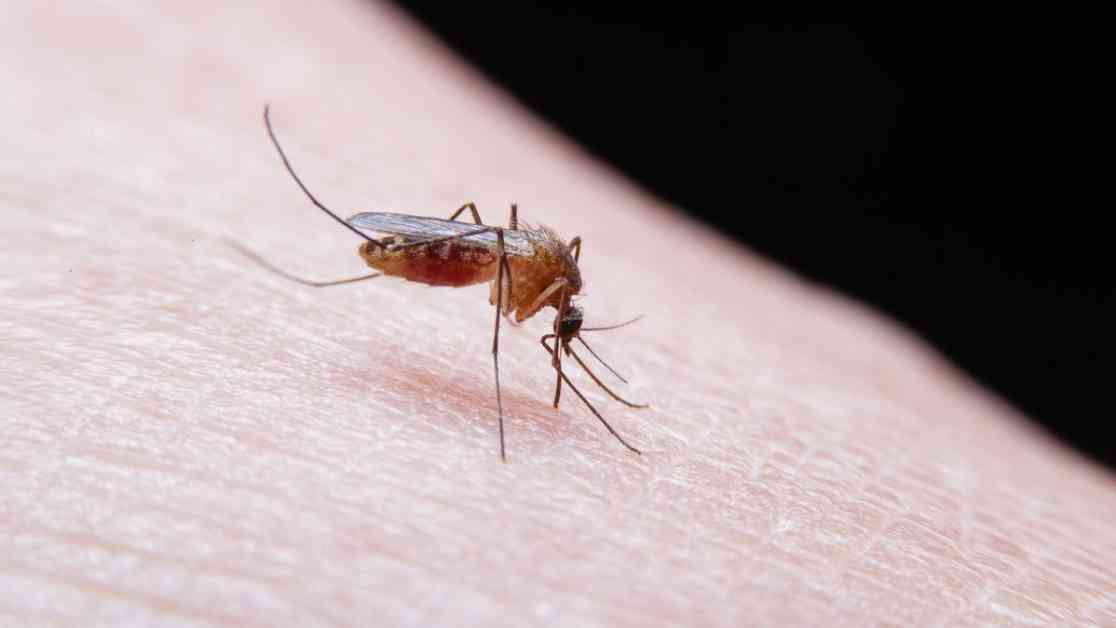An outbreak of a deadly virus spread by mosquitoes has sparked panic and lockdown measures in Massachusetts. The virus in question is the Eastern Equine Encephalitis (EEE) virus, which was detected in a resident of the state on August 16. Considered highly risky, the virus has led to the confinement of 10 localities in order to address the problem. According to Dr. Gérald Kierzek, an urgent care physician, this pattern could potentially recur in the future.
### The Emergence of a Public Health Crisis
In response to the presence of the EEE virus, stringent measures have been implemented in the state of Massachusetts. These actions, including curfews, closures, and warnings, are not in response to the Covid-19 pandemic, but rather to combat the spread of this new deadly virus transmitted by mosquitoes.
The EEE virus is a rare but potentially fatal disease that manifests with symptoms such as headaches, fever, vomiting, and seizures. Alarmingly, approximately 30% of individuals infected with the virus do not survive, with the remaining individuals experiencing lasting neurological effects. The recent case of an octogenarian in Worcester County, the first human infection since the previous epidemic in 2019-2020 which claimed 7 lives, has prompted urgent action in the region.
### Swift and Decisive Actions
In light of the current situation, 10 localities have taken significant steps to prevent further contagion, emphasizing the seriousness of the risk posed by the virus. For instance, the city of Plymouth has closed all parks and fields from dusk until dawn since August 23. Similarly, Oxford has imposed a curfew prohibiting any outdoor activities after 6 PM. The Massachusetts Department of Health has officially identified 10 localities as « high or critical risk » areas, prompting the initiation of aerial mosquito spraying in select zones of Plymouth County. Truck-mounted spraying operations are also scheduled for certain areas of Worcester County this week.
### Climate Change and the Spread of Vector-Borne Diseases
The heightened prevalence of mosquito-borne diseases in the United States, such as the EEE virus, can be attributed in part to the extended mosquito season resulting from climate change. The rise in temperatures and humidity levels brought about by climate change creates optimal conditions for mosquito proliferation, leading to an increased risk of disease transmission.
Dr. Gérald Kierzek, our medical director, concurs with this assessment, underscoring the interconnectedness of environmental factors and public health. He asserts, « Overall, this virus, like others, is linked to climate change. These environmental issues that are emerging are due to vectors that are currently altering the landscape. Diseases that were once confined to specific regions are now becoming global phenomena due to increased travel and a warming climate. »
### Adapting to a Changing Landscape
In light of these shifting dynamics, Dr. Kierzek advocates for a paradigm shift in our approach to healthcare. He emphasizes the importance of embracing a holistic approach to veterinary and human health, which includes measures such as mosquito control, vigilance, and the adoption of practices traditionally associated with tropical regions.
Furthermore, bolstering our immune systems over the long term is essential in combating infectious diseases. Dr. Kierzek notes, « This is a battle between viruses and human beings. If the body is weakened, the virus gains the upper hand. Since we cannot completely eradicate mosquitoes or viruses, we must focus on strengthening our immune defenses. »
### Conclusion
The outbreak of the EEE virus in Massachusetts serves as a stark reminder of the evolving landscape of infectious diseases and the critical role of public health preparedness. As climate change continues to influence the spread of vector-borne illnesses, it is imperative that communities remain vigilant and proactive in addressing emerging health threats. By adopting a comprehensive approach that encompasses environmental stewardship, disease surveillance, and immune system fortification, we can mitigate the impact of infectious diseases and safeguard public health for future generations.

